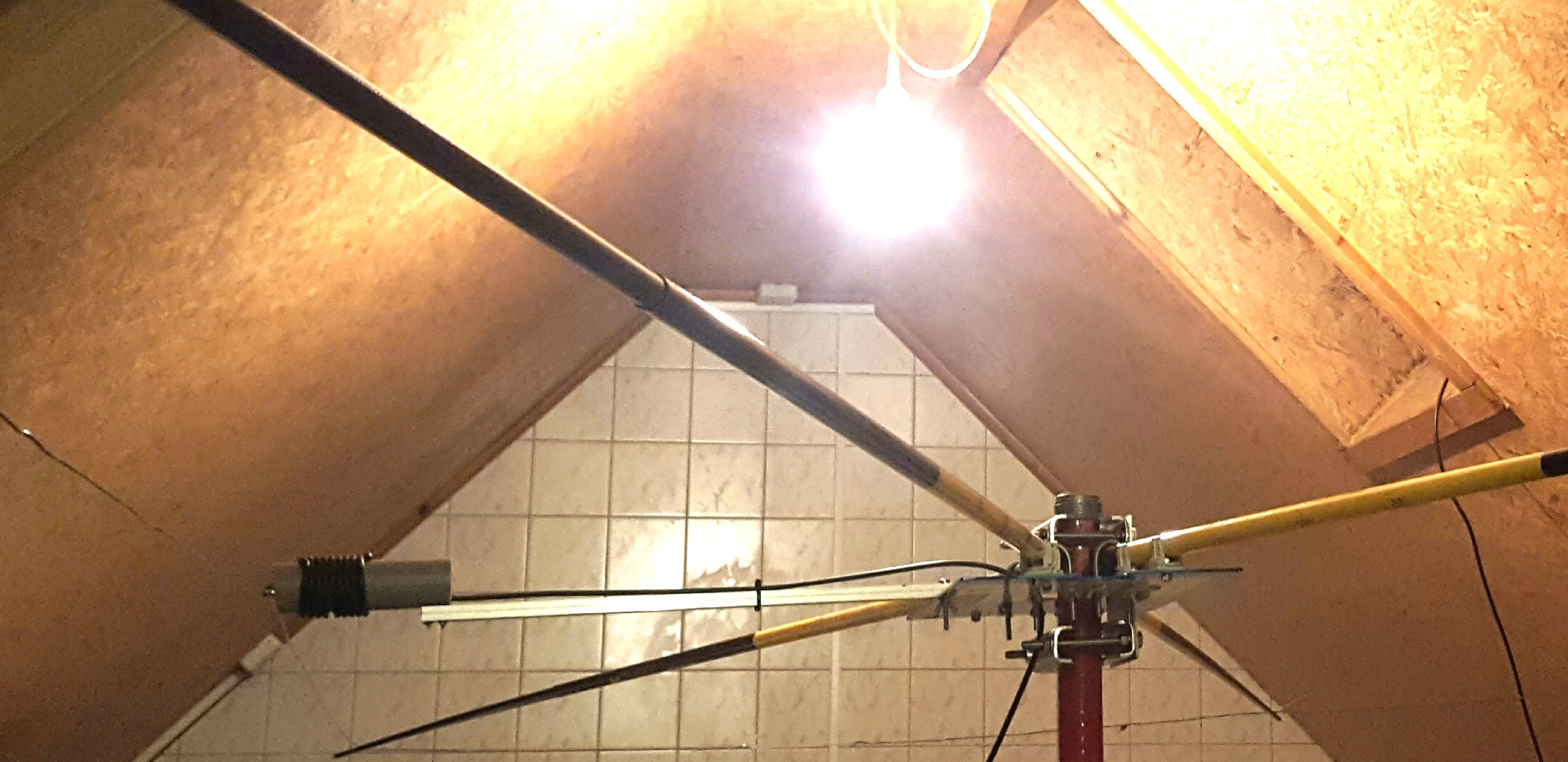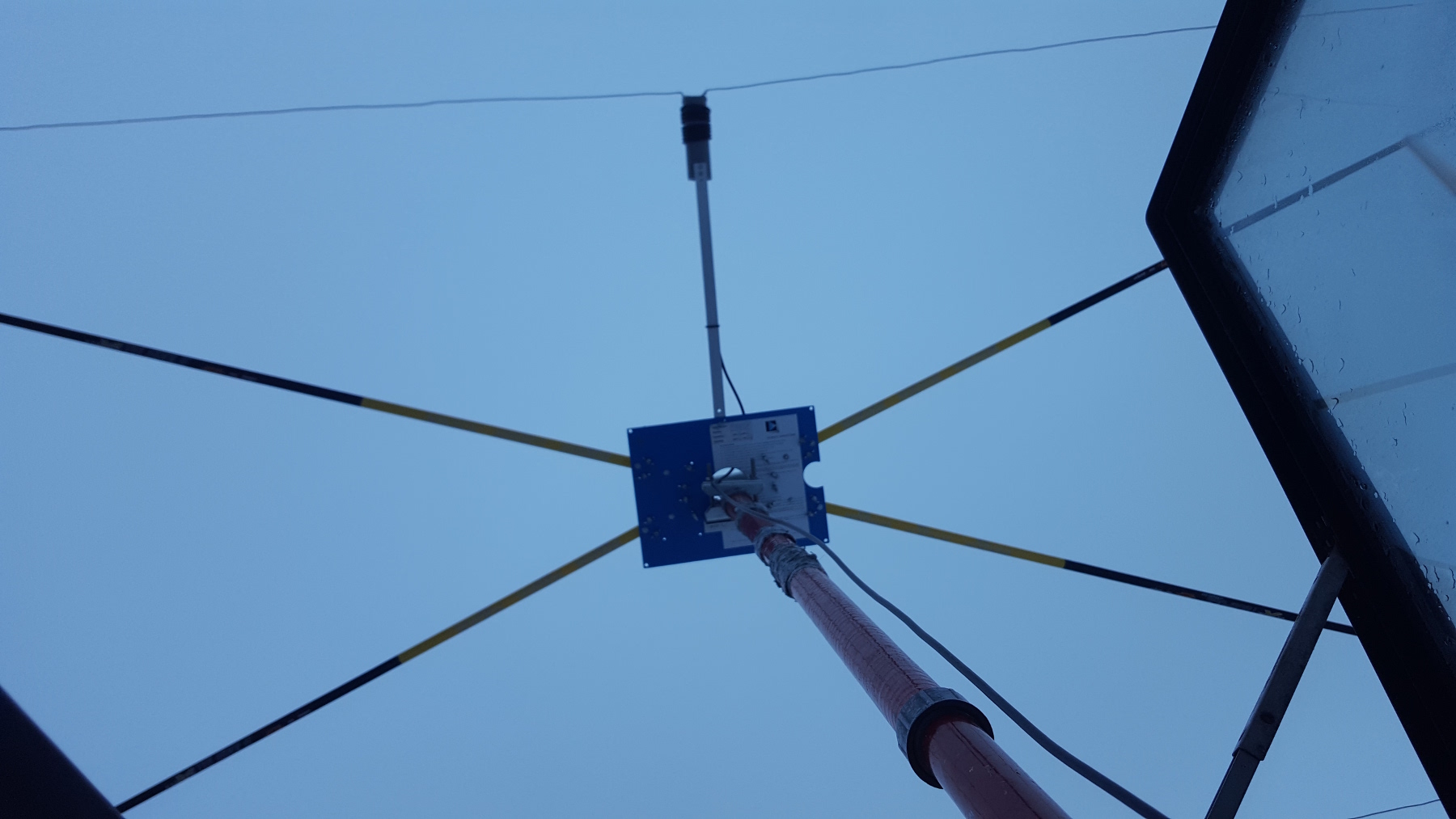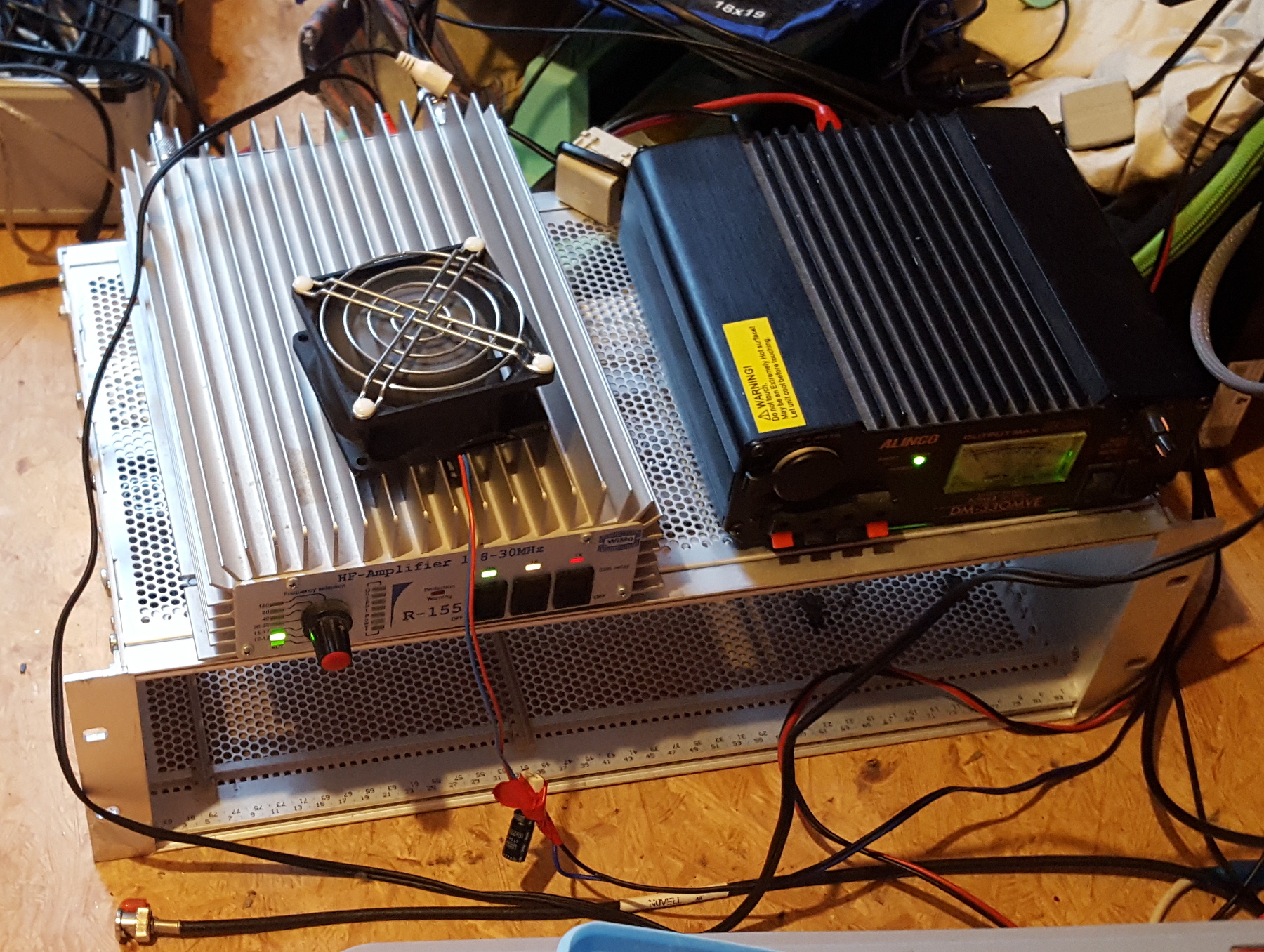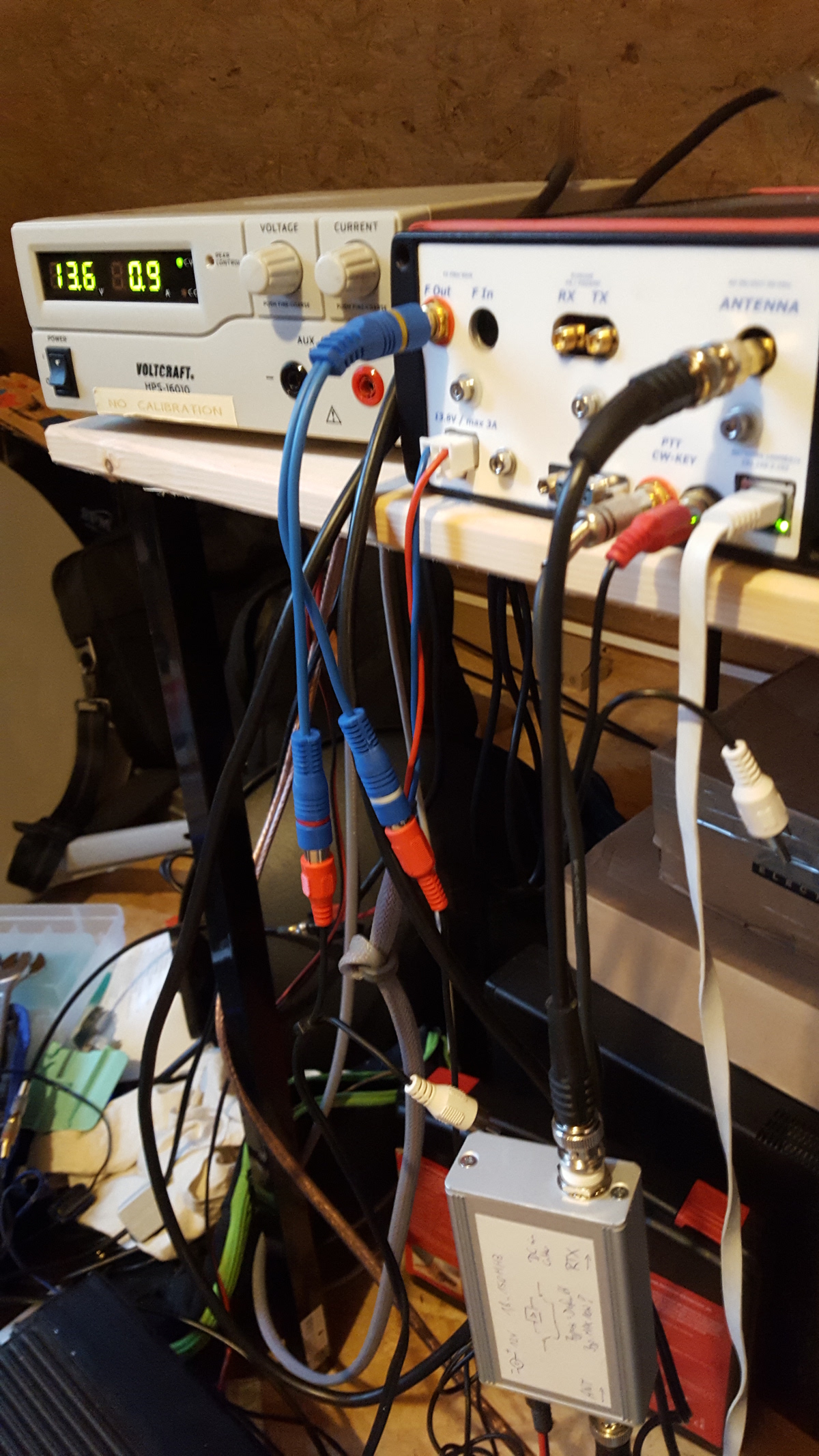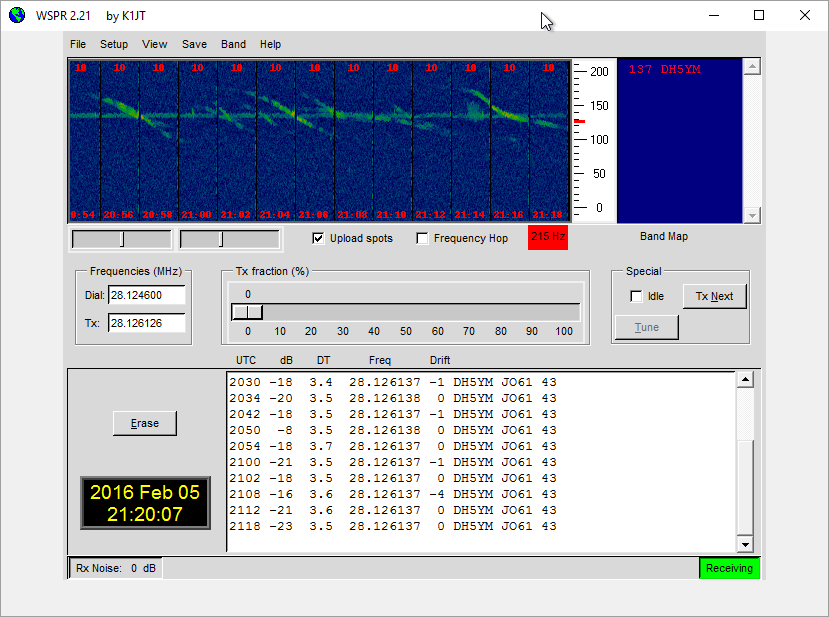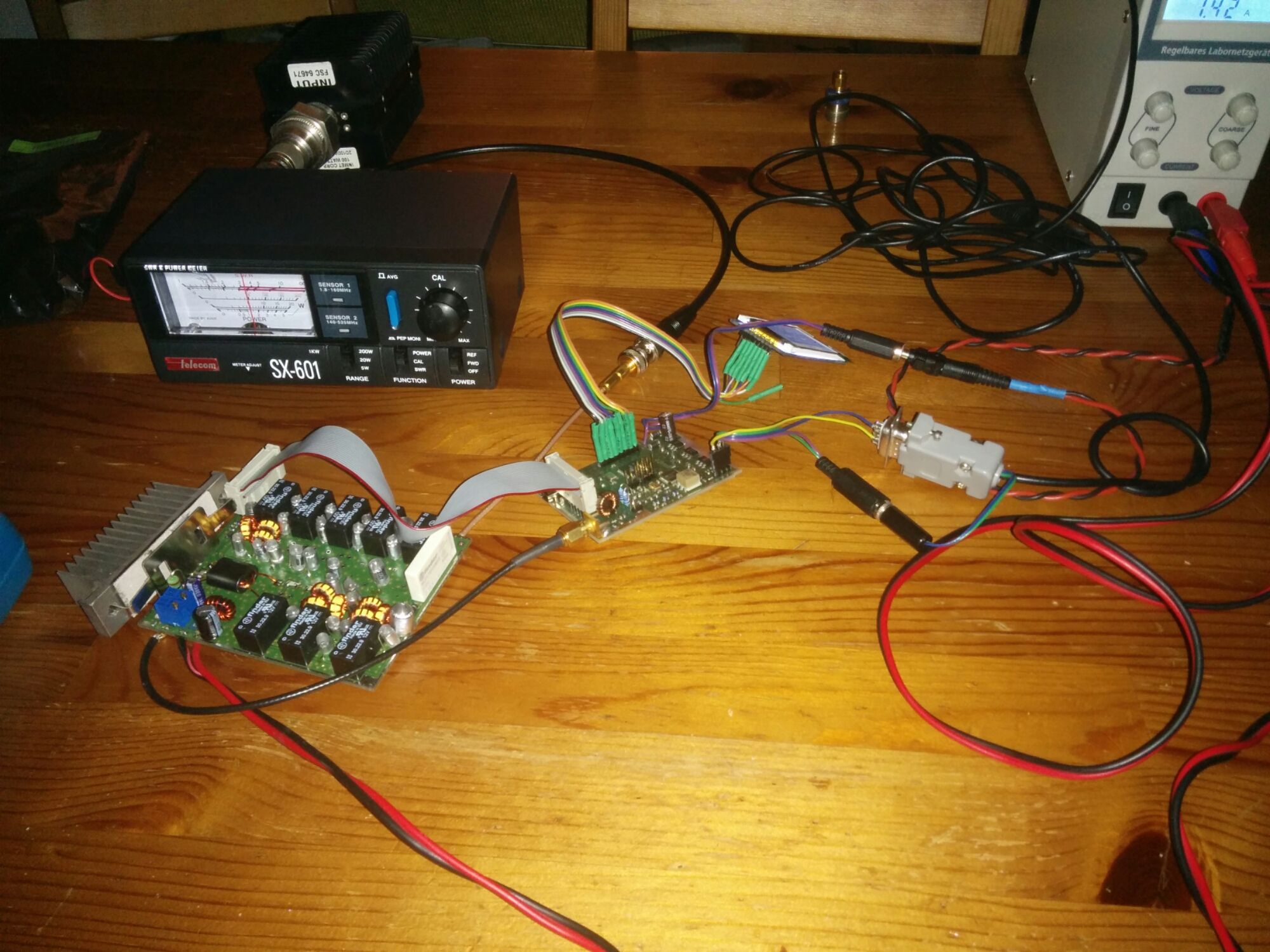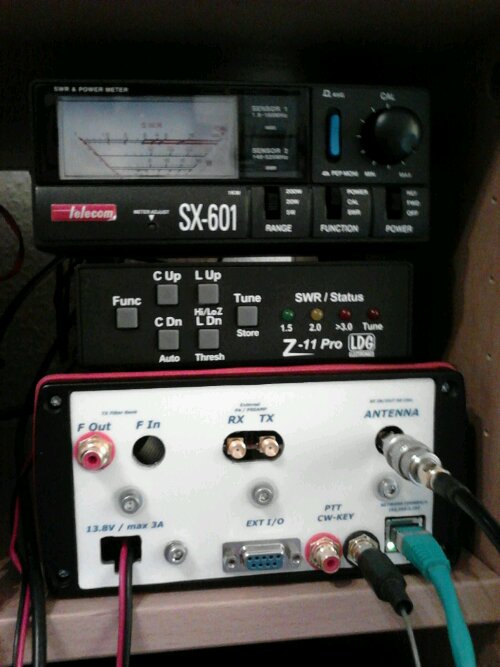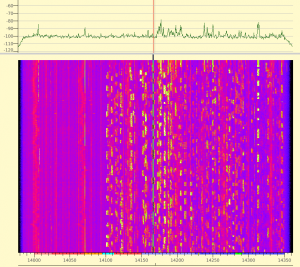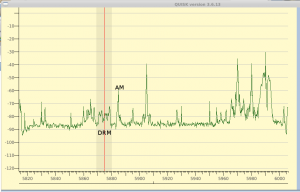This year i spent quite some time in preparation of the 10m contest. Already a year ago i bought some fishing rods with the plan to make a Moxon antenna. This antenna was realized now. The transceiver was my HiQSDR again driving a R155 PA. In order to improve sensitvity i connected a wideband LNA from Funkamateur. The LNA was switched on and bypass by one of my sequencer PCBs. Quisk SDR forwarded 192kHz IQ samples to skimmer and from there the decodes went to the bandmap of tlf log. I started in CW and worked quite some multies. After one hour i changed to SSB which was a likely a fault because the activity in phone was low. The last 30 minutes were spent in CW again.
The map below shows the locations of the stations worked. They were taken from internet and might be incorrect. The map shows that i mainly had the moxon to north and west direction.

stations worked in 10m contest 2021 – maps by openstreetmap and opentopo contributors via DL4MFM edi analyzer
The most heavy part of the moxon is the mounting plate. The fishing rods are snapped to the plate and then fixed with U brackets. There are 16 wing nuts to fix.
Getting the antenna outside is not that easy. It needs to be mounted outside and there was little space because of a chimney nearby.
It you do not take care everything will end up in a big mess.
The software did cosist of Quisk, skimmer and tlf log.
The R155 PA can generate 100W with 5W input. Unfortunately it seems not very robust against some RF nearby. The linear power supply i tried to use before went unstable in SSB. Therefore i had to swap the supplies.
HiQSDR is quite unsensitive on 10m. I used a LNA from Funkamateur which has bypass relais for TX. I had to replace the transistors because both where faulty.

